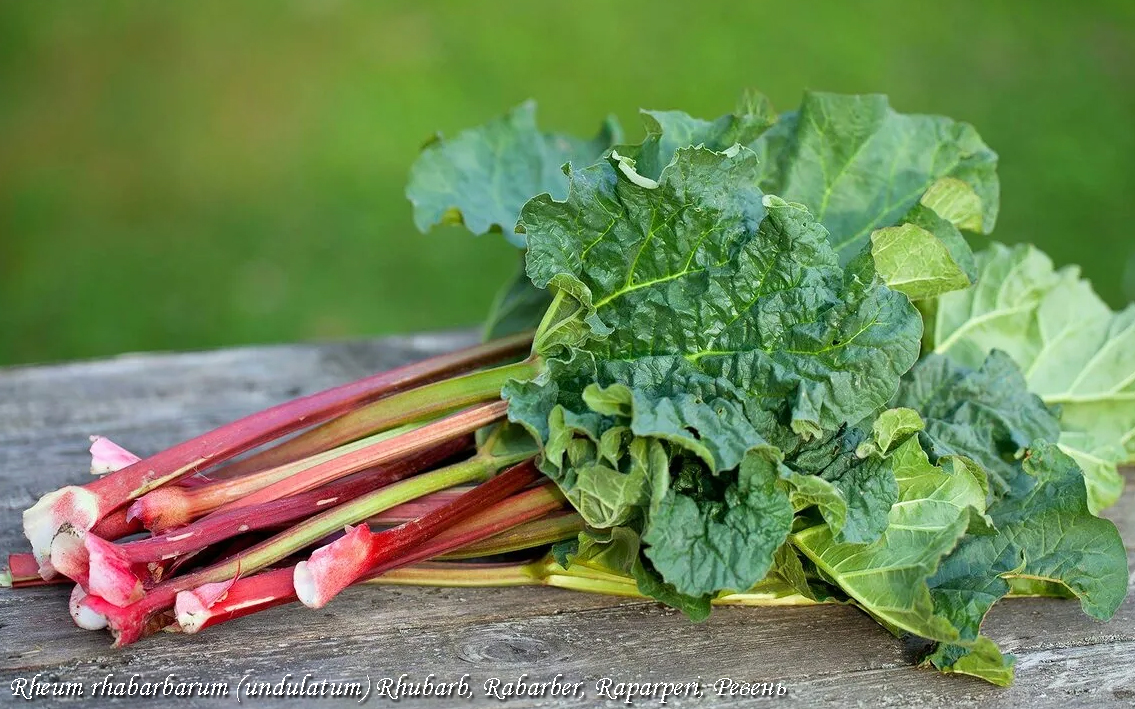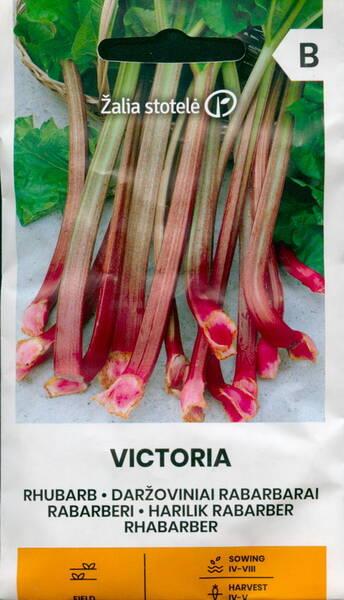A perennial vegetable crop is an unpretentious old-timer of the northern garden.
The variety is early and productive. Juicy red-pink petioles 30 cm long are used for food. They have a pleasantly sour taste, they are one of the first sources of vitamin C.
Traditionally, kissels and other drinks, fillings for pies, jam, and candied fruits are prepared from petioles. They begin to collect 2-3 years after sowing. Productivity is 4.2 kg/m2. Petiole weight 80-120 g. Excellent taste. It is especially appreciated for its high yield and taste.
Growing conditions: sowing before winter in a nursery or in a permanent place in early spring. The seeds are soaked in warm water. Sowed to a depth of 2-2.5 cm hatched. The culture is moisture-loving, cold-resistant and shade-tolerant.
Care consists in removing flower stems, loosening, watering and fertilizing. In one place grows for 10-15 years.
Landing pattern 70x70 cm.
In 1 gram = 65-75 seeds.

Bot. syn.: Rheum rhabarbarum L.
* In the first year, rhubarb grows very slowly, requires frequent loosening of the soil to a depth of 4-6 cm and weeding. The harvest is collected in the third year after sowing or in the second year after dividing the mother bushes.
When harvesting, it is recommended not to cut the petioles, but carefully break them off at the base. You can do 3-4 harvests per season.
In terms of nutritional value and chemical composition, rhubarb can be compared to apples.
It significantly surpasses many vegetables in vitamin content. Its petioles contain sugar, protein, pectin, nitrogenous substances, potassium, magnesium, calcium, and phosphorus salts. The pleasant taste and aroma of rhubarb is due to the content of organic acids (malic, citric, oxalic, salicylic, and succinic).
It has long been known that dishes made from rhubarb have dietary and healing properties. The petioles are eaten raw or put into borscht, they are used to make pie filling, jam and compotes. The roots are used as medicinal raw materials. In folk medicine, rhubarb is used to improve the functioning of the gastrointestinal tract, as a laxative.
Rhubarb marmalade.
You will need: rhubarb (petioles) - 1 kg, sugar - 1 kg, zest of 1 orange.
How to cook: put the chopped petioles in a wide bowl, cover with granulated sugar and add the zest of one orange to the mixture. Cover the bowl with a lid and place it in the refrigerator.
After 2 days, put the bowl on the fire and cook the marmalade, stirring constantly, for 30 minutes. Then put it in glass jars.












